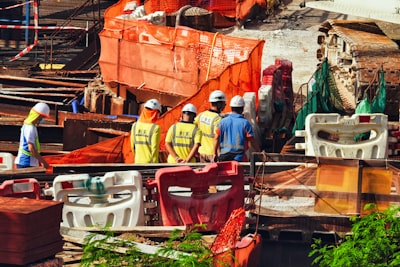Summary
A tragic accident occurred at a construction site near the Hong Kong-Zhuhai-Macau Bridge, where a worker was killed and another injured by a falling steel beam. In the immediate aftermath, Hong Kong's Development Bureau placed a temporary ban on the unnamed contractor from bidding for public road and drainage projects. The contractor must now conduct an independent safety audit and submit a plan for improvement before any consideration to lift the ban is made. China State Construction Engineering (Hong Kong), associated with the accident, expressed condolences and offered support to affected families.
Analysis
The severity of the incident and the Bureau's decisive response highlight safety's centrality in public works. Temporarily banning the contractor demonstrates a shift toward stricter accountability for occupational hazards. This approach aligns with global calls for greater contractor responsibility after site fatalities, echoing similar moves in cities facing construction booms and related safety risks. However, the decision to not publicly name the contractor may limit public scrutiny and transparency; this could be contrasted with other jurisdictions where public accountability is seen as a deterrent to negligent practices.
There is also an ongoing tension between rapid urban development and safety standards. Hong Kong, in its role as a major infrastructural hub, often juggles ambitious timelines with the need to maintain worker welfare. The requirement for an independent audit and improvement plan is a positive step but ultimately depends on implementation and enforcement. The broader consequences for the industry could include heightened scrutiny, increased costs, and potential delays—factors that may influence future tendering competitiveness and project management practices.
Discussion
This incident matters because it raises fundamental questions about the social contract between governments, private contractors, and the workers at the heart of urban progress. Why do fatal accidents still occur in environments where safety must be paramount? Are current regulations and enforcement mechanisms sufficient, or are deeper cultural and systemic changes required? When accidents result in loss of life, the ethical and moral obligation to improve systems is clear. But often, only headline-grabbing tragedies prompt meaningful reform, leaving recurring near-misses unaddressed.
Drawing global parallels, major cities have grappled with similar challenges—London following the Grenfell tragedy, New York in response to crane-related accidents. Each context highlights the trade-off between economic dynamism and human cost. Ultimately, the goal should be a culture where no project timeline or budget can outweigh basic safety commitments.
In conclusion, while Hong Kong's swift regulatory response is encouraging, public vigilance and continuous systemic evolution are needed to ensure that such incidents do not become mere statistics. Stakeholders—government, contractors, and the public—must engage in an ongoing dialogue about what acceptable risk looks like and who bears responsibility when safety is compromised.

Comments
No comments yet. Be the first to comment!